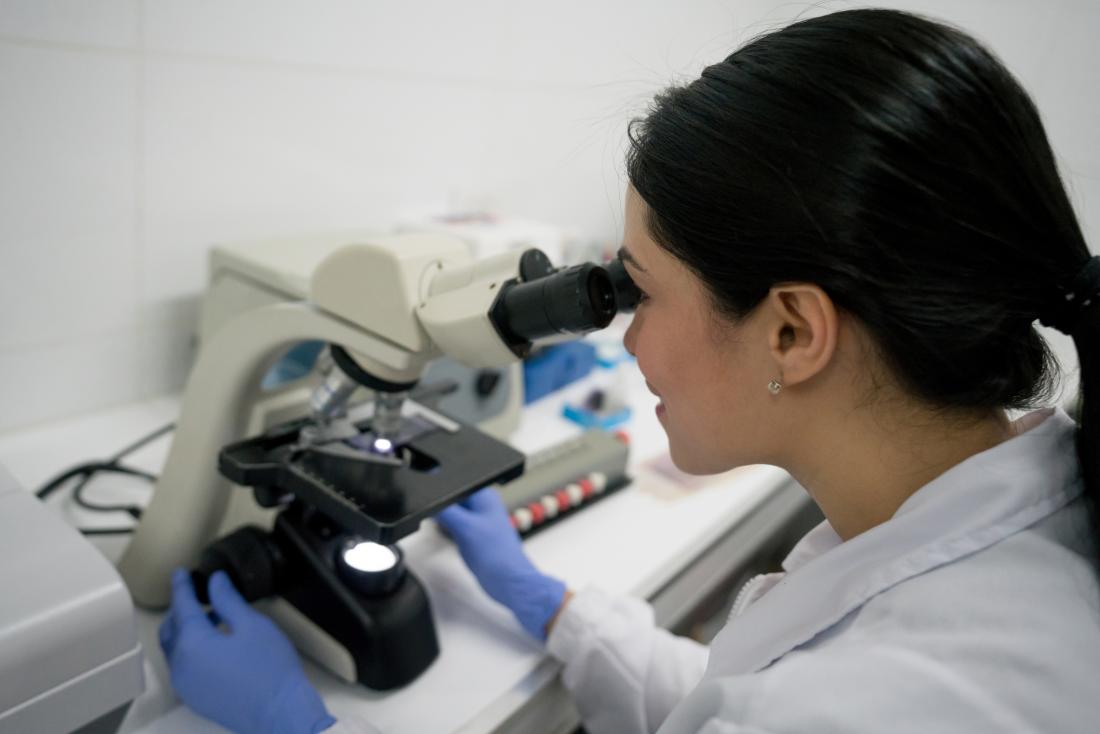What to know about the KOH exam for fungal infections

The skin lesion KOH exam is a simple test that helps doctors identify fungal infections on a person's skin, hair, and nails.
When doctors perform a KOH exam, they take a skin scraping, which they then place in a potassium hydroxide (KOH) solution and analyze under a microscope.
The skin lesion KOH exam is also called a potassium hydroxide test or a fungal smear.
In this article, we look at the procedure of a skin lesion KOH exam, if you need to prepare for it, and what the results mean.
What does a KOH exam test for?
The KOH test will check for a range of different fungal infections in the skin, hair, nails, or vaginal secretions. These infections may include:
- ringworm
- athlete's foot
- jock itch
- oral or vaginal Candida
People with a fungal skin infection may not have any symptoms. If they do, a doctor may recommend a KOH exam if a person shows the following signs:
- a rash on the skin
- scaling
- redness
- raised patches
- inflamed skin
- itching
The degree of symptoms will depend on the type of fungus causing the infection, as well as the person's general and immune health.
KOH exam procedure
If a doctor suspects that someone has a fungal infection, they will ask questions including:
- what the specific symptoms are
- when they were first noticed
- what might have caused them
- what makes them better or worse
Next, the doctor will visually examine the affected area before deciding whether to perform a KOH exam.
A skin lesion KOH exam is very simple and straightforward.
The doctor will take a tool to scrape and remove some of the affected skin, which is called a skin scraping procedure.
They then place the skin scrapings into a liquid containing potassium hydroxide, or KOH, which will destroy all cells that are not fungal cells.
Next, the sample is looked at under the microscope, making it is very easy to see if there is a fungus in the sample.
How to prepare
People do not usually need to prepare in advance for a skin lesion KOH test. However, they should always follow their doctor's advice about what to do before, during, and after a medical procedure.
People may experience minor discomfort or pressure as the skin sample is taken, but it should not be painful.
There is a very slight risk of bleeding or infection after the sample is taken. A person should always let the doctor know if there is any bleeding that does not go away or signs of infection, such as redness, warmth, swelling, or pain at the site.
Interpreting the results
A KOH test will show if a fungal growth is present in the sample.
Interpreting the results of a KOH test is straightforward. The results will either show that there is a fungus in the skin sample or not.
If the tests do not show any fungus, the doctor may perform further tests to find out what is causing the symptoms.
In some cases, the test may fail to detect a fungal infection. This result could be because there was no fungus present, or in situations where:
- there are not enough fungal cells in the sample
- incorrect collection of the sample
- the fungal organisms grow very slowly, making them hard to see
- the specimen was not stored correctly or received by the lab soon enough
- a person used antifungal medications at home before having the sample taken
Other possible tests for skin fungus
In addition to a skin lesion KOH test, many other possible diagnostic tests can also detect a fungal infection. These include:
Wood lamp examination
A Wood lamp is a lamp that emits long-wavelength radiation. It can be used to detect fungal infections in the hair or scalp, also known as tinea capitis.
If a fungal infection is present, the sample will glow a greenish or bluish color, making it easy to see and diagnose.
Stained wet-mount
A stained wet-mount test is similar to a KOH test, but a blue or black stain is also applied to the sample, making it easier to see fungal cells under the microscope.
Biopsy with special stains
Doctors may use a range of different stains to turn a fungus an alternative color, making it easier to see under the microscope. They tend to use these stains when there is a negative result from the KOH test, or in certain clinical situations.
The doctor will determine whether testing with these stains is necessary based on the clinical symptoms and the KOH exam results.
Biopsy and culture
For a biopsy and culture test, a doctor takes a skin sample and sends it to a lab, where it is allowed to grow using special nutrients.
It takes slightly longer for the results of this test to come back, but it is more accurate than many other tests.
A biopsy and culture test will tell the doctor exactly which species of fungus is causing an infection. This clarity allows them to select the most effective anti-fungal treatment for a specific infection.
Outlook
Fungal infections are fairly common and, in most cases, are easily treated with anti-fungal medication.
In the majority of instances, an over-the-counter or prescription anti-fungal cream will kill the fungus and treat the infection. Sometimes, an oral anti-fungal pill is needed instead.
It is vital for a person to stay in communication with their doctor and go to all appointments until the infection has completely cleared. They should ensure to follow up with the doctor, as needed, especially if the symptoms do not improve with treatment.
SOURCE: MEDICAL NEWS TODAY
Comments
Post a Comment